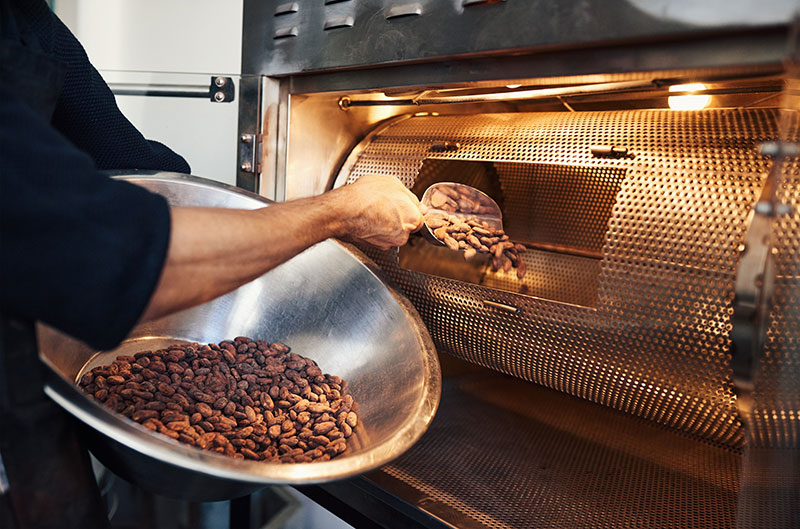The extraction of these substances with the EMPOWERING DEVICE offers real added value, but it should be borne in mind that the processing must be almost immediate and cannot be carried out on a large scale; a thoughtful and diversified production of these substances could however bring great added value to the industrial production of cocoa.
Furthermore, with traditional extraction systems, large quantities of waste are created from exhausted solvents, solvents that, thanks to our technologies, we can recycle, consequently lowering production costs, as well as the environmental impact.
Cocoa beans are mainly used for the food production of chocolate and cocoa derivatives, including cocoa mass, butter, powder and liqueurs. These products are widely consumed and appreciated all over the world, showing a growth rate of consumption in the European Union and North America (respectively 1.7 and 3.6% per annum) (FAO, 2003). According to the latest report from the International Cocoa Organization (2018), the production of cocoa beans during the 2015/16 harvest was estimated at 3.9 million tons. At the same time, it is estimated that 16 million tons of residual biomass have been produced, taking into account the aforementioned dry weight of the fruit (80%).
Therefore, through the processing of cocoa, about 80% of cocoa fruits are discarded as residual biomass, including cocoa pod husks, cocoa bean shells and industrial waters.
Farmers regularly discard these residues / by-products during the initial stages of cocoa bean processing, occupying large areas and creating social and environmental problems. Alternatively, this residual biomass is used as a fertilizer for the cocoa tree. However, its disposal occurs without proper treatment, causing putrid odors and plant diseases.











